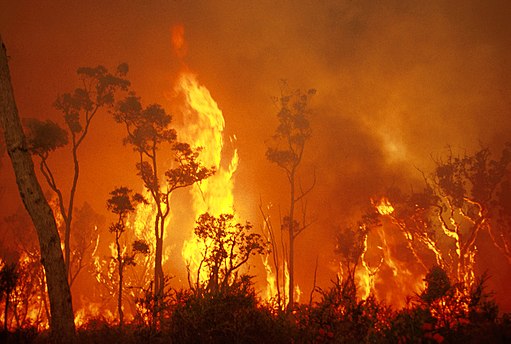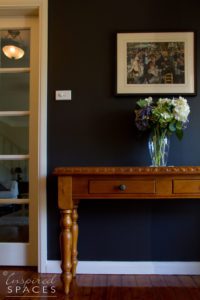Australia’s climate is one of the harshest in the world. It tests us with all of natures elements – flooding through to drought, storms, cyclonic winds and ferocious bush fires. Each of them alone can be catastrophic and devastating to communities and the surrounding landscape.
In NSW, all new housing developments close to native bushland and in a bush fire prone zone have a legal obligation to meet the requirements outlined in the ‘Planning For Bush Fire Protection 2006’ document. A Bush Fire Management plan is undertaken of the area in order to work out, and put in place, any additional preventative features that may be required to decrease fire risks. These are put forward to the local council.

CSIRO [CC BY 3.0 (http://creativecommons.org/licenses/by/3.0)], via Wikimedia Commons
What is a Bushfire Attack Level (BAL)?
A Bushfire Attack Level rating indicates the construction requirements necessary. But also provides information on materials required to reduce the risk of fire spreading from bushland into the home.
The categories of attack are determined by the site position. For example, whether there’s a slope (fire runs with greater intensity uphill), the types of vegetation and the distance of nearby vegetation.
The BAL rating accounts for possible fire danger coming from direct heat, flames or floating embers.
There are six BAL categories set out by The Australian Standard Construction (AS3959-2009).
The Six Ratings
The list below was taken from NSW Government Fire Service Website. It explains the six bush fire attack levels which range from low to extreme. Depending on which rating a dwelling is given will determine what protection measures are legally required to be put in place.
BAL-LOW
Minimal attack from radiant heat and flame due to the distance of the site from the vegetation. However, some attack by burning debris is possible. There is insufficient threat to warrant specific construction requirements, but residents should still do basic property preparation.
BAL-12.5
Attack by burning debris is significant with low levels of radiant heat (not greater than 12.5kW/m2). Radiant heat is unlikely to threaten building elements (i.e. unscreened glass). Specific construction requirements for ember protection and accumulation of debris are warranted (Level 1 construction standards).
BAL-19
Attack by burning debris is significant with an increased radiant heat levels (not greater than 19kW/m2) threatening some building elements. Specific construction requirements for protection against embers and radiant heat are warranted (Level 2 construction standards).
BAL-29
Attack by burning debris is significant and radiant heat levels (not greater than 29kW/m2) can threaten building integrity. Specific construction requirements for protection against embers and higher radiant heat are warranted. Some flame contact is possible.
BAL-40
Increased attack from burning debris with significant radiant heat and the potential for flame contact. The extreme radiant heat and potential flame contact could threaten building integrity. Buildings must be designed and constructed in a manner that can withstand the extreme heat and potential flame contact.
Flame Zone
Radiant heat levels will exceed 40kW/m2. Radiant heat levels and flame contact are likely to significantly threaten building integrity and result in significant risk to residents who are unlikely to be adequately protected. The flame zone is outside the scope of the BCA and the NSW Rural Fire Service may recommend protection measures where the applicant does not provide an adequate performance solution. Other measures such as drenching systems and radiant heat barriers may also be required.
For more information on bushfires and how to be prepared visit NSW Rural Fire Service Website.
For professional advice on interior design, decorating or materials for your home or commercial space please contact the team of Inspired Spaces today!






Leave A Comment Or Ask A Question